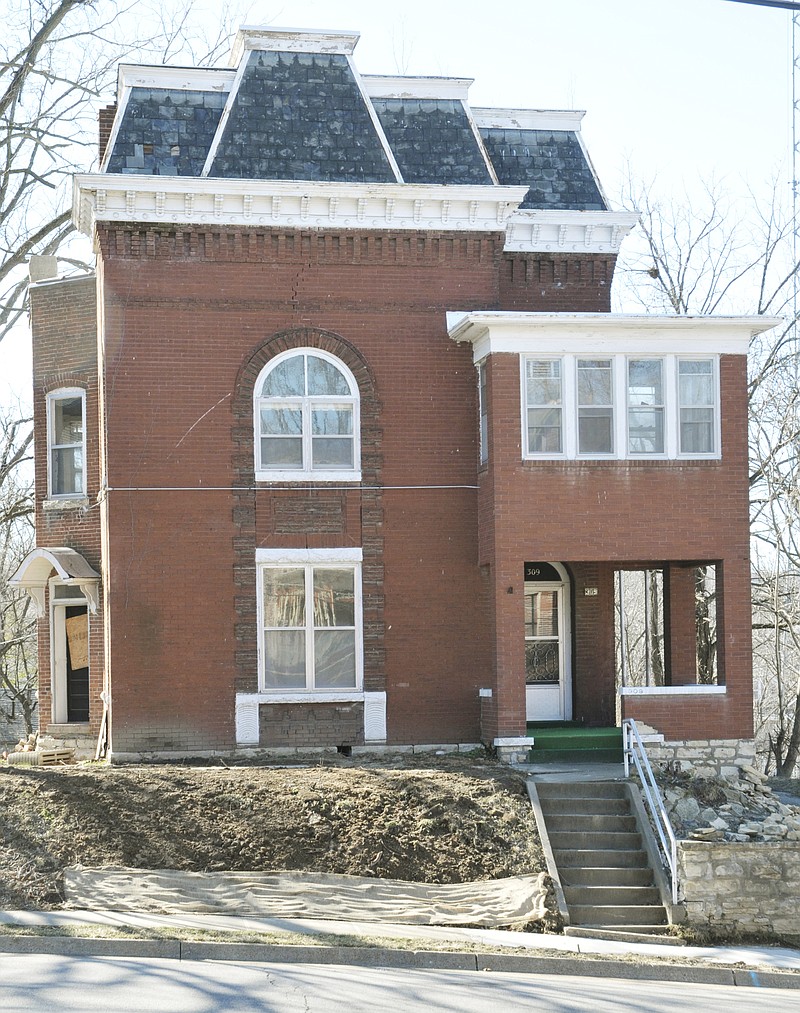Henry Bockrath and his wife, Elizabeth, offer a unique glimpse into the lives of German immigrants who brought their culture, values, faith, language and architecture to Missouri, then adopted more modern and American ways through the decades.
The merchant and factory owner retired to the second-empire stone and brick home at 309 W. Dunklin St. in 1889. That building was approved Friday by the Missouri Advisory Council on Historic Preservation to advance for consideration on the National Register of Historic Places.
"They are the first known and possibly the most prominent owners of the home," said Jane Beetem, who prepared the application.
The Henry and Elizabeth Bockrath House, if approved, will be added to the Historic Southside (Munichburg) Multiple Property nomination.
"The house retains its original locations, form, size, massing, fenestration pattern, materials, craftsmanship, and setting," Beetem wrote in the nomination. "The house has been and will remain in
residential use.
"The overall appearance of the Henry and Elizabeth Bockrath House remains much the same as it would have looked over one hundred years ago.
"The house retains its architectural integrity and its original domestic function."
The two-story home with a faux Mansard roof sits prominently on a hill on the edge of the Old Munichburg neighborhood.
The second empire-style architecture was popular in Jefferson City in the late 1800s, Beetem said. The Governor's Mansion is the only other remaining example, from a list that included the public school at the corner of Monroe and Miller streets, the second Capitol, the former city hall on High Street and an early administration building at Lincoln Institute, she said.
The Porth House and Paddy Malone's on opposite corners of Bolivar and Main streets also have the Mansard roof style. Bockrath's general mercantile, where he and his family lived on the second story, was nearby on Main Street when those roofs were added.
Bockrath's shoe factory was located near the Missouri State Capitol at Stuart and Water streets.
In 1903, five shoe factories were located at the Missouri State Penitentiary.
"In the face of such competition, with below market-rate labor, it is remarkable that Henry Bockrath decided to construct a shoe factory outside the prison, using non-prison labor," Beetem wrote.
She suggested that was an example of Missouri-German culture, where people considered hard work a part of life and helped those in their community.
Henry Bockrath was born in Hanover, Germany, and immigrated at age 16 after being orphaned at age 10. Elizabeth Bockrath was born in Prussia, but was reared in St. Louis.
The Bockraths supported and served as a mentor to other German immigrants, particularly those who belonged to St. Peter Catholic Church, as they did.
"He took care of people in a quiet way," Beetem said.
Before moving to Jefferson City, the Bockraths lived and worked in Florissant, where their home and store featuring more traditional German style also is listed on the National Register.
But by retirement, they chose the more modern second empire style, reflecting the cultural changes common for the first generation German immigrants, Beetem said.
The German neighborhood of Old Munichburg would see further cultural change, especially as anti-German sentiment grew as a result of World War I.
By 1929, the eye-catching home was converted into two apartments and by 1935 it was three.
The last several years, it sat empty, owned by someone out of town. The city eventually had to board up parts of the building and a stone retaining wall began to crumble.
Professional Building Restoration LLC acquired the building in 2012. They intend to restore the interior, most of which retains its original features, and open it as a three-apartment building again.

